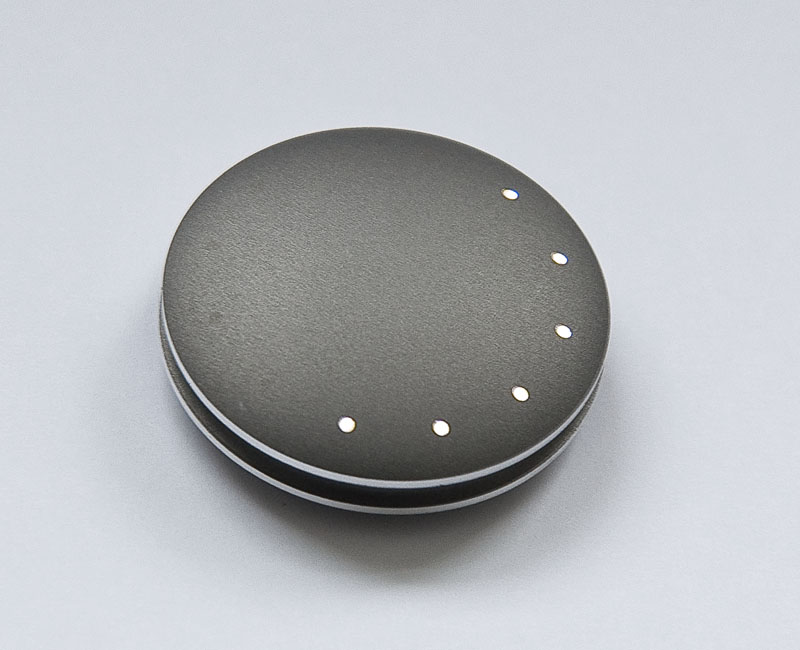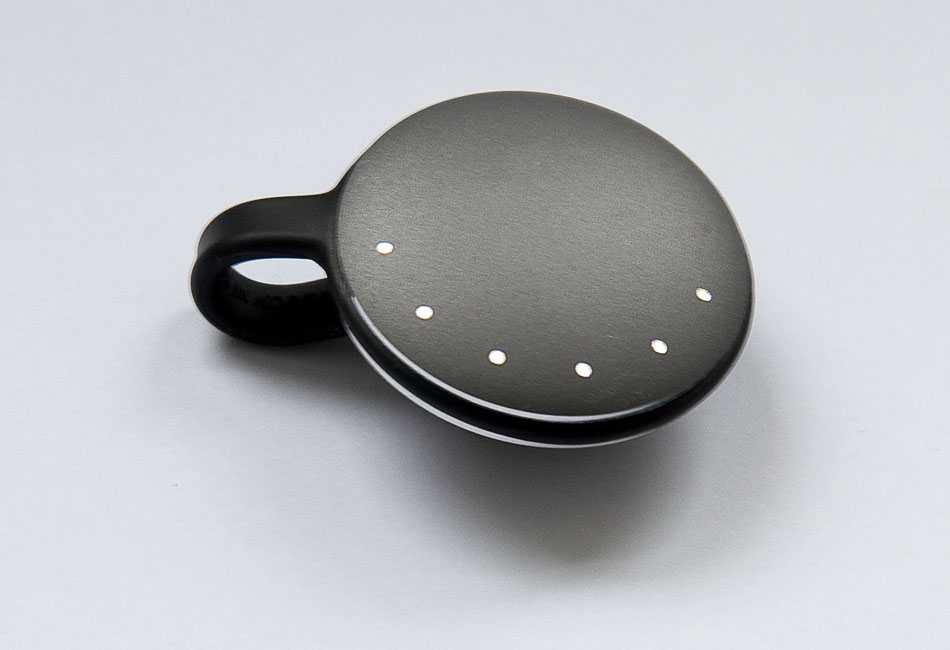The Misfit Shine: A Review
A long time ago I backed a crowd-funded project on Indiegogo for the Misfit Shine “the world’s most elegant physical activity monitor”. It blasted through its funding goal and suffered delays, but about a month ago they asked for a shipping address, though I don’t recall receiving a shipping notice. Nevertheless, two days ago my doorbell rang and a man from FedEx handed me a packet containing a Shine.

And I love it.
The Shine is elegant, beautiful even. It is understated but playful. It looks like a small, grey pebble, until you tap it twice. Then one or more of its twelve, twinkling, pure-white LEDs will shine, telling you how much you have moved today, relative to your goal. After that, in a delightful, ingenious way, the lights tell the time, to five-minute accuracy, a small antidote to the second-precision punctuality that modern life and gadgets so often seem to demand.
For me, so far, everything about the Shine is perfect. To sync it to an iPhone, you download and launch the app and then place the Shine on the phone’s screen. Activity data uploads, while the Shine puts on a light show and ripples spread out on the iPhone’s screen. It’s simple, but satisfying. One synchronized, the app shows graphs of your movements, highlights notable achievements and summarizes how you’re doing, this week, relative to a points target that you can set.
Unlike many activity trackers, the Shine uses a replaceable battery that lasts 4–6 months, so no recharging is required and you can wear it at night if you want to track sleep. It is waterproof and rugged, so you can swim with it. It comes with a simple magnetic clasp that makes it very easy to attach to clothing, and there are various watch-strap and necklace attachments too. In a touch reminiscent of the special tool Apple provides for iPhone users to open their SIM slots, the Shine comes with an elegant dedicated, tool for opening the battery compartment. (You could use a screwdriver, but it all adds to the feeling that they’re not skimping, that everything should be perfect.)

Oh: and as far as I can tell, it works. I don’t know how accurate it is, but the activity graphs look to match what I have been doing well, and the granularity of information is just right. Both days, so far, it’s encouraged me to move more, and it doesn't seem as if it's going to become a burdon.
I think Misfit Wearables has got just about everything right. I hope Shine becomes a massive hit.
So what’s this got to do with Scientific Marketing?
I didn’t post this with a view to its relevance to the usual themes of this blog; I just wanted to spread the word about my lovely new toy. But in fact, it’s not so far off topic.
The main focus of this blog is how marketing is used—well and badly, for good and for ill—to attempt to change people’s behaviour. Effective marketing campaigns cause people to do things (purchase, renew, stay, click, visit) that they would otherwise not have done. Proper campaign design, with appropriate use of control groups, allows measurement of the effectiveness of marketing in changing behaviour, while uplift modelling allows us to identify the people for whom a given campaign, action, or activity is likely to be most effective.
In a marketing context, one entity (the marketing organization) is trying to change the behaviour of another (typically a customer or a prospective customer). In the case of activity monitors, the two entities are the same: I wear a Shine with the goal of influencing my own behaviour. Like many others, I know that I am less active than I should be, and would like to get a little fitter. The raison d'être for activity monitors is to encourage us to move more, by providing feedback on how we’re doing and incentives to do more.
Two days in, with only myself as a test subject, there is clearly a limit to how much I can really say about the true effectiveness of the Shine. But I think it gets a lot right.
By being small and beautiful, and pleasing to interact with, it immediately encourages us to use it, to wear it and to interact with it.
By providing only coarse information (it can show only 12 different activity levels) it discourages obsession and constant checking every few minutes (which could easily be negative), but encourages periodic checking, which is helpful.
By including a rather elegant, minimal watch function, it gives another reason to interact with the Shine, giving activity feedback along the way. Additionally, my sense is that the implicit message of the 5-minute accuracy meshes perfectly with the big-picture message of Shine itself: don’t obsess about exactly what Shine’s points measure, just try to make sure you move enough to accumulate plenty each day.
By having a non-rechargable battery that lasts for months, and being sturdy and waterproof, it encourages wearing all the time, even at night, reducing the likelihood of finding yourself without it or breaking the habit of using it.
By making the iPhone app simple and minimalist, and making the sync process artificially pleasing, it encourages frequent interaction with the app, reinforcing progress (or lack thereof).
I think the people behind the Shine have pulled off something pretty amazing, and my prediction for myself is that I won’t abandon it any time soon, and it will prove a useful tool for changing my own behaviour.
Note:
My only connection with Misfit Wearables is that I backed their Indiegogo campaign and am the proud owner of a Shine. I would love them to succeed because I think they’ve made something excellent.
Labels: behaviour, fitness, measurement, misfit, review, shine
<< Home